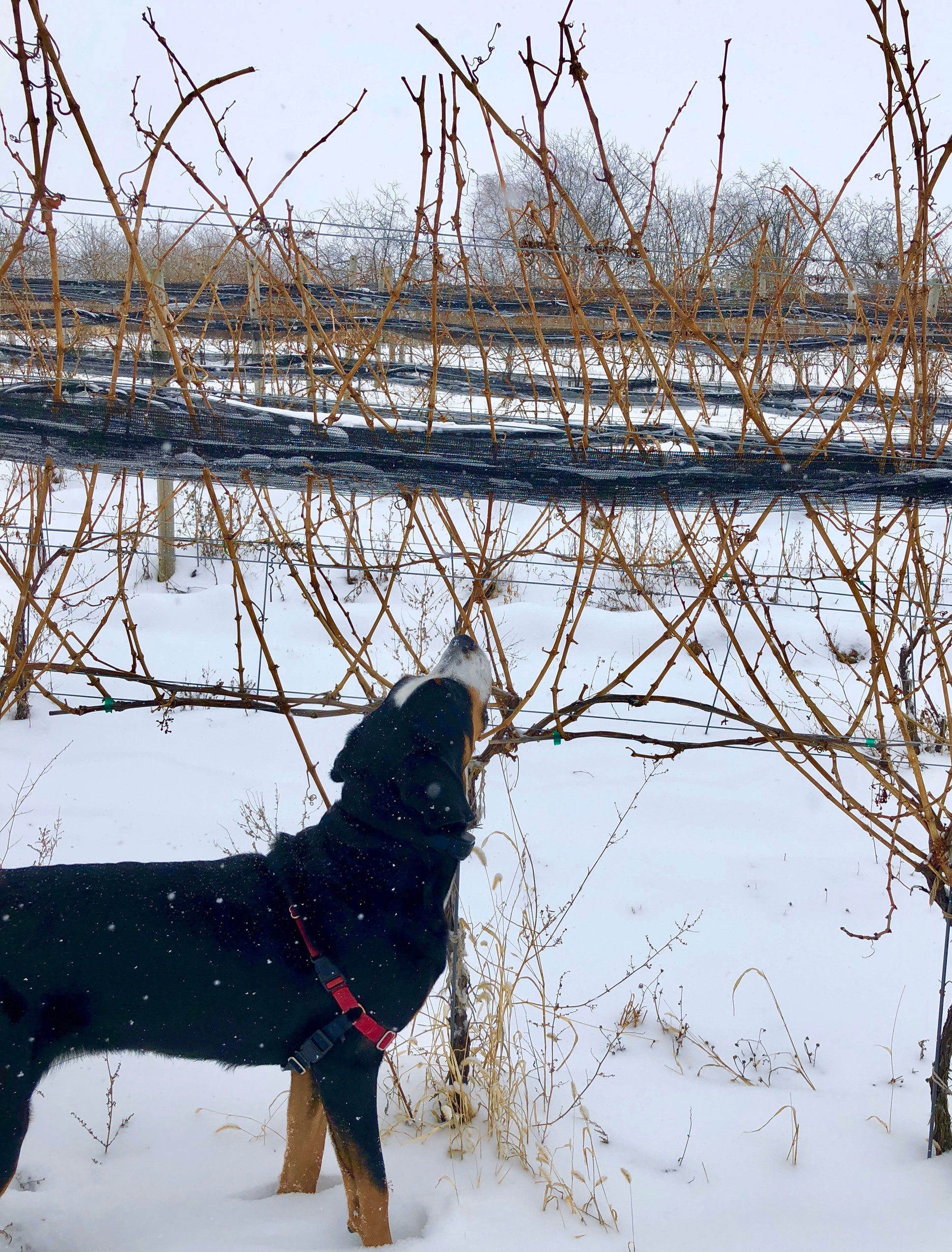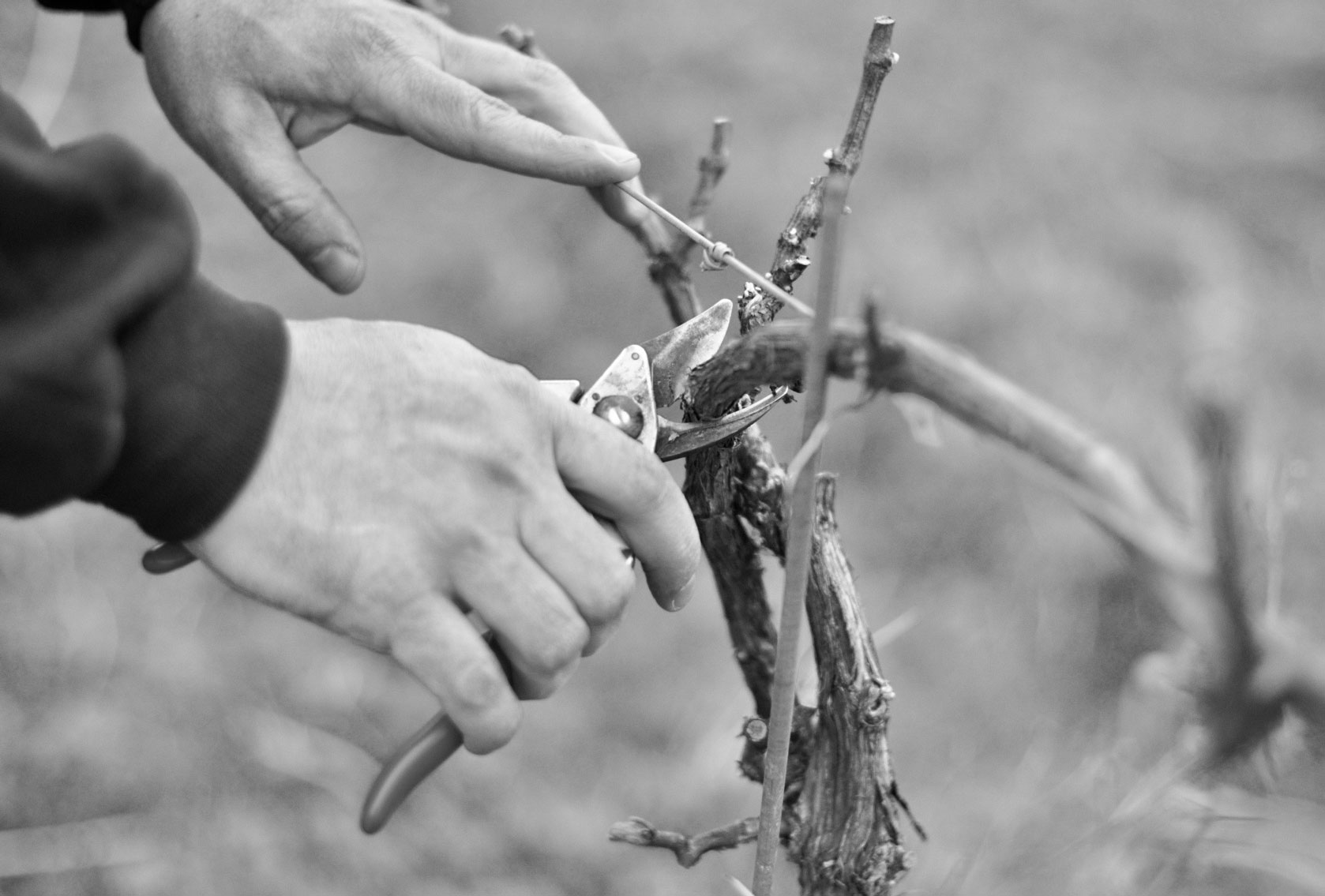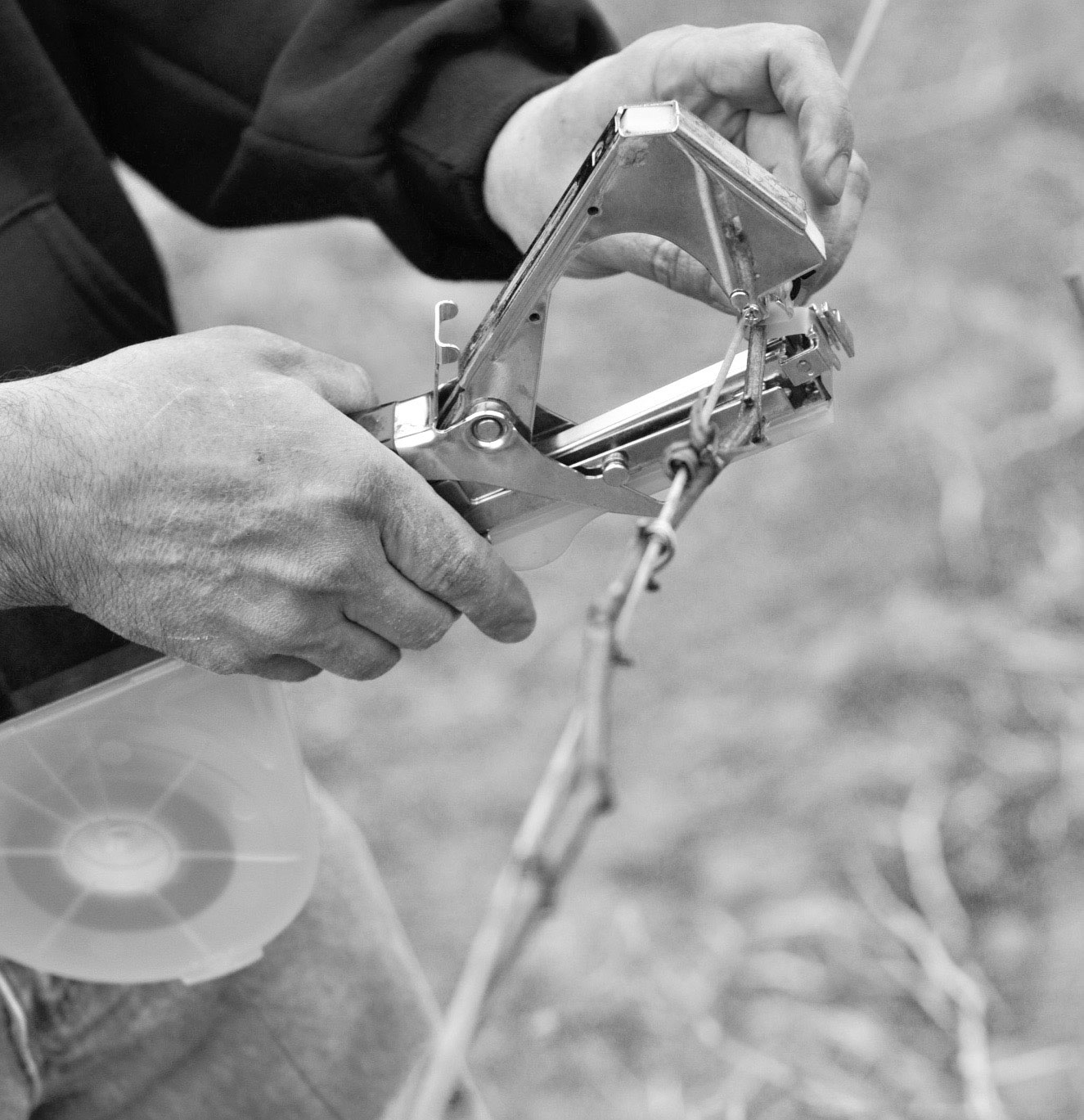26 Apr Pruning & Tying
The first months of the year are a quiet, peaceful time of rest and rebirth in our vineyard. After Autumn’s harvest, the vines store energy for the upcoming season, shed their remaining leaves, and transition to a state of dormancy. The once lush vineyard is transformed: only the vine trunks and bare canes remain, pointing upwards, and dreaming of their spring awakening. The winter vineyard landscape is a bit stark, but the contrast between the dark, skeletal vines and the brilliant snow can be hauntingly beautiful.
While winter weather persisted through mid-to-late-April, we feel fortunate that the winter of 2018 was relatively kind to us, as we did not encounter many extreme cold weather events. Now that the spring thaw is finally here, the vines are beginning to come back to life. Warm temperatures over the past few days mean that sap is flowing in the vines – the first sign that the vines are waking up from their winter slumber. As a result, there is much work to be done to prepare them for the upcoming vintage. One of the first vineyard activities of each new year is pruning the vines, then selecting the best fruiting canes for each vine, and finally tying each cane to the fruiting wire.
Pruning
We prune the vines for several reasons: it allows us to maintain the vines’ training system, remove the old canes which bore the prior year’s fruit, and choose the fruiting canes for the upcoming vintage. This year, we pruned the vineyard in late March, after the greatest risk of injury from extreme cold had passed. At Heart & Hands, we prune with the intent of cultivating a “balanced vine”: seeking to achieve a balance between optimal fruit production, and sufficient but not excessive vine and canopy growth.
We do our pruning work in two passes. During the first pass, we remove the old plant material, and leave behind a couple of potential fruiting canes. During the second pass, we select the best cane or canes for each vine and remove the others. While we have helping hands with the first pass of pruning, Tom prefers to do the final pass himself. By doing so, he can make the critical decisions for the season, and select the best possible fruiting cane for each vine.
Tying
After pruning the vineyard, we move on to tying. Tying provides support to the vine, and ensures that the future grapes are in the best physical position to promote growth, ripening and harvesting.
We gently wrap each fruiting cane around the fruiting wire – taking great care to avoid cracking or damaging the vine. Then we use a tool called a tapener to secure the fruiting cane to the fruiting wire at the end of the cane. We also tie the trunk of the vine to a metal stake which is placed directly next to the base of the plant.
Timing this work is tricky. Ideally, you want to finish tying before bud break. Once the tender buds emerge from the vine you must work very slowly to avoid harming them. However, if you start too early during cold weather, the vines are more brittle, and there is more risk of cracking the vine when wrapping it around the wire.
This year, we started tying the vineyard in early April. The work will continue through the remainder of the month in the long awaited warmer weather!









Sorry, the comment form is closed at this time.